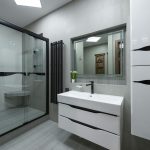The Connection Between Interior Design and Wellbeing in UK Homes
Understanding the interior design wellbeing UK relationship is crucial for creating homes that support mental and physical health. Research consistently shows that the environments we inhabit impact overall wellbeing. Evidence-based design, a method using scientific findings to guide interior choices, plays a pivotal role in enhancing comfort and promoting health within UK residences.
UK-specific studies highlight how factors like lighting, colour schemes, and spatial arrangements affect mood and stress levels. For example, homes with access to natural light and uncluttered layouts encourage mental relaxation, reducing anxiety common in urban UK settings. Additionally, integrating biophilic elements—such as plants and natural textures—can strengthen a resident’s sense of connection and calm.
Also to see : How Can Sustainable Practices Transform Everyday UK Home Living?
Key factors shaping UK home design include typical architectural styles like terraced houses or flats, often characterised by compact or segmented spaces. Designers must consider these constraints while applying wellbeing principles. Local climate also influences choices around ventilation and light management, emphasizing the importance of tailoring interior design wellbeing UK strategies to regional context.
By prioritising evidence-based design within these parameters, UK homeowners can cultivate environments that significantly improve mental health home design outcomes and overall quality of life.
In the same genre : Why Should You Invest in Sustainable Décor Options for Your Home?
Psychological Benefits of Thoughtful Interior Design Choices
Thoughtful interior design wellbeing UK strategies significantly influence residents’ psychological states. Colours and textures play a crucial role; for instance, soft blues and greens can foster calm, while warm tones might boost energy levels. Incorporating tactile materials such as natural fabrics or wood enhances sensory comfort, positively affecting mental wellness.
Personalised spaces matter greatly for UK homeowner wellbeing. When individuals tailor areas to reflect their tastes and routines, they experience lower stress levels and improved emotional connection to their home. A dedicated reading nook or hobby corner can serve as mental sanctuaries, supporting relaxation and focus.
Creating calming environments within typical UK home layouts—often compact and segmented—requires clever use of spatial design. Open-plan living areas or zones delineated by subtle design elements help reduce feelings of confinement. Simple measures like minimising clutter and ensuring visual harmony further enhance mental clarity.
By prioritising these psychological impacts in interior design wellbeing UK practices, homeowners encourage mental wellness while adapting to the unique constraints of UK living spaces. This approach aligns well with broader evidence-based design principles linking space, mood, and wellbeing.
Physical Wellbeing Enhanced by Interior Design
Creating a healthy home design in UK residences significantly boosts physical health interiors by focusing on air quality, light, and ergonomics. Maximising natural light is pivotal; sunlight not only improves mood but also supports vitamin D synthesis, crucial during the UK’s often dim seasons. Well-ventilated spaces reduce indoor pollutants, preventing respiratory issues by promoting fresh air circulation, especially important in typical UK flats and terraced houses.
Ergonomic furniture tailored to UK home layouts enhances comfort and prevents musculoskeletal problems. For example, adjustable chairs and properly supported sofas accommodate the varied space constraints found in UK homes while promoting good posture. Incorporating non-toxic and sustainable materials further advances physical wellbeing. These materials limit exposure to harmful chemicals frequently present in traditional furnishings, fostering safer living environments.
This approach to interior design wellbeing UK connects physical health directly to design decisions. Emphasising natural elements and safe materials aligns perfectly with evidence-based design principles prized by UK experts. By addressing the unique environmental and spatial factors prevalent in UK housing, homeowners can transform interiors into nurturing spaces that safeguard and elevate physical wellness consistently.
Expert Recommendations on Improving UK Home Interiors
Unlocking the full potential of interior design wellbeing UK involves practical advice from UK interior designers and psychologists. Their expert tips wellbeing focus on subtle yet impactful changes that enhance comfort and promote mental and physical health consistently. Key recommendations include maximising natural light by using light-coloured curtains or reflective surfaces to brighten compact spaces, a common UK home constraint.
Experts also encourage decluttering and organising to reduce stress—a simple step deeply rooted in evidence-based design principles connecting environment to mental clarity. Introducing biophilic features like indoor plants improves air quality and psychological comfort, further relating to holistic wellbeing strategies relevant to UK settings.
Adaptive furniture and flexible layouts rank highly among practitioner advice, vital for older flats and terraced houses prevalent across the UK. These approaches enable multifunctional spaces that meet evolving lifestyle needs without sacrificing wellbeing.
Current trends emphasise sustainable materials and local craftsmanship, supporting eco-friendly choices that align with health and environmental priorities. By embracing these expert insights, homeowners can create nurturing interiors that meet the unique demands of UK homes while fostering lasting wellbeing through thoughtful, evidence-based design.









